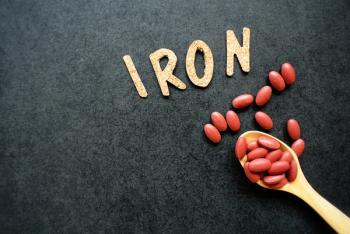
What's the best approach to hyperprolactinemia?
The dopamine agonists cabergoline and bromocriptine have replaced surgery for prolactinomas, a key cause of infertility. Two experts share their protocols for treating these benign tumors and explain which drug to choose when pregnancy is the goal--and which better restores menses.
HYPERPROLACTINEMIA
What's the best approach to hyperprolactinemia?
By Whitney S. Goldner, MD, and Janet A. Schlechte, MD
The dopamine agonists cabergoline and bromocriptine have replaced surgery for prolactinomas, a key cause of infertility. Two experts share their protocols for treating these benign tumors and explain which drug to choose when pregnancy is the goaland which better restores menses.
Prolactinomas are benign prolactin-secreting pituitary tumors and the cause of amenorrhea in about 1 out of every 5 young women with that condition.1 Fortunately, most tumors in women are small intrasellar masses (microadenomas) that don't grow progressively larger and rarely lead to headaches, neurologic dysfunction, or hypopituitarism.2-5 Hyperprolactinemia occurs because the tumor oversecretes prolactin (PRL). The PRL secretion in turn interferes with pulsatile secretion of gonadotropin-releasing hormone and inhibits estrogen production, wreaking havoc with the menstrual cycle, and leading to hypogonadism and infertility.
The classic features of hyperprolactinemia are amenorrhea, galactorrhea, and infertility, but galactorrhea may occur alone, and some women with hyperprolactinemia have oligomenorrhea or regular menses.6 The low estrogen levels accompanying prolactinomas may also lead to osteopenia.7 The diagnosis of a prolactinoma is confirmed by the sustained elevation of serum prolactin and the presence of a pituitary tumor on MRI (Figure 1).
Prior to the development of dopamine agonists, women with prolactinomas routinely underwent surgery. Transsphenoidal pituitary surgery is effective in highly selected patients, but hyperprolactinemia often recurs after surgery and there's no assurance of a long-term cure.8 Dopamine agonists revolutionized the treatment of prolactinomas and have virtually eliminated the need for surgery. Our goal here is to focus on the two dopamine agonists available in the United States and how to use them to treat women with prolactin-secreting microadenomas.
Choosing a dopamine agonist
Bromocriptine and cabergoline are the only dopamine agonists approved for the treatment of hyperprolactinemia in the US. (Pergolide, while available, is approved only for Parkinson's disease, and the potent dopamine agonist quinagolide is available only in Europe and Canada.) Bromocriptine, an ergot derivative, has been used for more than 20 years, while cabergoline, a non-ergot agonist, was approved in 1996. Both bind to cell-surface receptors on pituitary lactotrophs.9 Both drugs reduce PRL and restore menses and fertility in 80% to 90% of women with prolactin-secreting adenomas.10,11 After oral administration of either drug, prolactin levels fall rapidly and gonadal function is usually restored within 3 months. Ovulation may resume before prolactin levels completely return to normal. The drugs also reduce tumor size.12
While both drugs can cause nausea, nasal stuffiness, and orthostatic hypotension, symptoms are usually worse with bromocriptine. The less expensive of the two, bromocriptine has the drawback of requiring twice daily dosing. Cabergoline, which needs to be given only once or twice weekly, is effective in patients who are resistant to or can't tolerate bromocriptine.13 Unfortunately, discontinuing either dopamine agonist usually results in recurrent hyperprolactinemia and tumor regrowth. Which dopamine agonist to choose depends on whether restoring fertility is your treatment goal.
Which drug is better when pregnancy is the goal?
If that is the goal, bromocriptine's safety record makes it the treatment of choice. Despite its use in more than 6,000 pregnancies, there's been no increase in spontaneous abortions, ectopic pregnancies, trophoblastic disease, multiple pregnancies, or congenital malformations.14,15 Even though infants of mothers who conceived after taking cabergoline don't seem to have a higher incidence of congenital malformations,16,17 investigators have studied prepregnancy cabergoline use in fewer than 300 patients.14 Therefore, more studies are needed before cabergoline can be recommended as first-line treatment for hyperprolactinemia in women who want to conceive.
Suggested bromocriptine regimen. We start patients on 0.625 mg at bedtime, with a snack to lessen the severity of side effects. After 1 week, we add a morning dose of l.25 mg and increase by 1.25 mg weekly to a total of 2.5 mg twice daily. The serum PRL is repeated after 1 month of therapy and the dose is increased at monthly intervals until serum PRL normalizes. A daily dose of 5 to 7.5 mg is usually adequate to normalize PRL and restore menses.
Advise women on bromocriptine to use a mechanical form of contraception until they've had two regular menstrual cycles and to discontinue the drug when they miss their first menstrual cycle.14 Used in this fashion, bromocriptine hasn't been associated with a greater number of congenital malformations or spontaneous abortions. A few women have used bromocriptine throughout pregnancy without fetal complications, but therapy during pregnancy is not recommended and is rarely necessary.18,19
Serum PRL levels normally increase during pregnancy, so you needn't monitor PRL levels on a regular basis.20,21 Formal visual field examinations and MRI scans during pregnancy are unnecessary, given the minimal risk (<l%) that small symptomatic prolactin-secreting tumors will increase in size.22 On the other hand, patients with prolactinomas larger than 10 mm and tumors that extend beyond the sella turcica do require serial visual field examinations and may even require therapy during pregnancy.14 Bromocriptine is secreted in breast milk and is not recommended in women who wish to breastfeed.
Intolerance to bromocriptine. For the minority of women who cannot tolerate bromocriptine and the small percentage who are resistant, the vaginal route may be the way to go.13 Vaginal administration of 2.5 to 5 mg of bromocriptine in the evening causes fewer gastrointestinal side effects and normalizes PRL just as effectively as an orally administered drug.23 The rare infertile patient who fails to respond to bromocriptine may require transsphenoidal surgery, which should be performed by an experienced neurosurgeon.14
Which drug is better when pregnancy is not the goal?
Following pregnancy, hyperprolactinemia usually resumes and galactorrhea and amenorrhea recur. In these patients, and in other amenorrheic women who do not wish to conceive, the goals of therapy are to restore gonadal function and prevent bone loss. Although you can use either drug, cabergoline may be more effective. In a direct comparison, cabergoline normalized PRL levels in 83% of patients compared to 59% treated with bromocriptine; it also restored ovulation more effectively (72% vs. 52%).24
Suggested cabergoline regimen. When restoring menses is the goal, we start with 0.25 mg of cabergoline once a week. While it's better tolerated than bromocriptine, cabergoline can still cause nausea, nasal stuffiness, and dizziness. After 2 weeks, increase the dose to 0.25 mg twice weekly and repeat the serum PRL in 1 month. A dose of 0.25 mg twice weekly is usually sufficient to normalize PRL. The maximum dose is l mg twice weekly (Table 1). Cabergoline is also the treatment of choice for patients with large tumors, because it's more potent and many of the large tumors are resistant to bromocriptine.13 Finally, because large prolactin-secreting adenomas may require therapy beyond a dopamine agonist, be sure to coordinate their management with an endocrinologist.
TABLE 1
Comparing bromocriptine to cabergoline
What about long-term therapy?
Dopamine agonists effectively decrease serum PRL and reduce tumor size, but the need for continual therapy is a major drawback. Because 95% of small prolactinomas do not grow progressively larger, using a dopamine agonist to prevent tumor growth is unnecessary.2-4 Side effects and the cost of the drugs make long-term adherence problematic. Therefore, when fertility is not an issue, consider an oral contraceptive instead of a dopamine agonist. The less expensive OC will restore a patient's estrogen levels, helping to prevent bone loss, and is better tolerated than a dopamine agonist. Estrogen therapy does induce mild hyperprolactinemia and lactotroph hyperplasia, but short-term OC therapy doesn't seem to cause tumor growth.25,26 We monitor PRL levels yearly but don't obtain serial MRI scans unless there's clinical evidence of tumor enlargement or a significant rise in PRL.
Some women who choose to take long-term bromocriptine or cabergoline are able to discontinue the drug. In about 25% of women treated for 2 years, PRL levels remained normal after the drug was stopped.27 Postmenopausal women with small tumors do not need to take dopamine agonists because the drugs are no longer effective in restoring gonadal function after menopause. Women with large tumors will require long-term therapy, but you may be able to lower the dose of either drug after 2 to 4 years.
Special considerations
There's no need to treat hyperprolactinemic women who have regular menses. Hyperprolactinemia may occur during treatment with neuroleptics, metoclopramide, and other drugs that interfere with dopamine synthesis or secretion. It's rarely necessary to turn to a dopamine agonist in these cases, as you can prescribe an oral contraceptive to manage the amenorrhea associated with drug-induced hyperprolactinemia.
REFERENCES
1. Luciano AA. Clinical presentation of hyperprolactinemia. J Reprod Med. 1999;44(12 suppl):1085-1090.
2. March CM, Kletzky OA, Davajan V, et al. Longitudinal evaluation of patients with untreated prolactin-secreting pituitary adenomas. Am J Obstet Gynecol. 1981;139:835-844.
3. Sisam DA, Sheehan JP, Sheeler LR. The natural history of microprolactinomas. Fertil Steril. 1987;48:67-71.
4. Schlechte JA, Dolan K, Sherman B, et al. The natural history of untreated hyperprolactinemia: a prospective analysis. J Clin Endocrinol Metab. 1989;68:412-418.
5. Schlechte JA, Sherman B, Halmi N et al. Prolactin secreting pituitary tumors in amenorrheic women: a comprehensive study. Endocr Rev. 1980;1:295-308.
6. Biller BM, Luciano A, Crosignani PG, et al. Guidelines for the diagnosis and treatment of hyperprolactinemia. J Reprod Med. 1999;44(12 suppl):1075-1084.
7. Schlechte JA, el-Khoury G, Kathol M, et al. Forearm and vertebral bone mineral in treated and untreated hyperprolactinemic amenorrhea. J Clin Endocrinol Metab. 1987;64:1021-1026.
8. Schlechte JA, Sherman B, Chapler F, et al. Long term follow-up of women with surgically treated prolactin-secreting pituitary tumors. J Clin Endocrinol Metab. 1986;62(6):1296-1301.
9. Webster J. Dopamine agonist therapy in hyperprolactinemia. J Reprod Med. 1999;44(12 suppl):1105-1110.
10. Bevan JS, Webster J, Burke CW, et al. Dopamine agonists and pituitary tumor shrinkage. Endoc Rev. 1992;13:220-240.
11. Sabuncu T, Arikan E, Tasan E, et al. Comparison of the effects of cabergoline and bromocriptine on prolactin levels in hyperprolactinemic patients. Intern Med. 2001;40:857-861.
12. Colao A, Di Sarno A, Landi ML, et al. Macroprolactinoma shrinkage during cabergoline treatment is greater in naïve patients than in patients pretreated with other dopamine agonists: a prospective study in 110 patients. J Clin Endocrinol Metab. 2000;85:2247-2252 .
13. Colao A, Di Sarno A, Sarnacchiaro F, et al. Prolactinomas resistant to standard dopamine agonists respond to chronic cabergoline treatment. J Clin Endocrinol Metab. 1997;82:876-883.
14. Krupp P, Monka C. Bromocriptine in pregnancy: safety aspects. Klin Wochenschr. 1987;65:823-827.
15. Molitch ME. Management of prolactinomas during pregnancy. J Reprod Med. 1999;44(12 suppl):1121-1126.
16. Robert E, Musatti L, Piscitelli G, et al. Pregnancy outcome after treatment with the ergot derivative, cabergoline. Reprod Toxicol. 1996;10:333-337.
17. Ricci E, Parazzini F, Motta T, et al. Pregnancy outcome after cabergoline treatment in early weeks of gestation. Reprod Toxicol. 2002;16:791-793.
18. Konopka P, Raymond JP, Merceron RE, et al. Continuous administration of bromocriptine in the prevention of neurological complications in pregnant women with prolactinomas. Am J Obstet Gynecol. 1983;146:935-938.
19. Badawy SZ, Marziale JC, Rosenbaum AE, et al. The long-term effects of pregnancy and bromocriptine treatment on prolactinomasthe value of radiologic studies. Early Pregnancy. 1997;3:306-311.
20. Goluboff LG, Ezrin C. Effect of pregnancy on the somatotroph and the prolactin cell of the human adenohypophysis. J Clin Endocrinol Metab. 1969;29:1533-1538.
21. Rigg L, Lein A, Yen SS. Pattern of increase in circulating prolactin levels during human gestation. Am J Obstet Gynecol. 1977;129:454-456.
22. Schlechte JA. Prolactinoma. N Engl J Med. 2003; 349:2035-2041.
23. Kletzky OA, Vermesh M. Effectiveness of vaginal bromocriptine in treating women with hyperprolactinemia. Fertil Steril. 1989;51:269-272.
24. Webster J, Piscitelli G, Polli A, et al. A comparison of cabergoline and bromocriptine in the treatment of hyperprolactinemic amenorrhea. Cabergoline Comparative Study Group. N Engl J Med. 1994;331:904-909.
25. Lloyd RV. Estrogen-induced hyperplasia and neoplasia in the rat anterior pituitary gland. An immunohistochemical study. Am J Pathol. 1983;113:198-206.
26. Corenblum B, Donovan L. The safety of physiological estrogen plus progestin replacement therapy and with oral contraceptive therapy in women with pathological hyperprolactinemia. Fertil Steril. 1993;59:671-673.
27. Passos VQ, Souza JJ, Musolino NR, et al. Long-term follow-up of prolactinomas: normoprolactinemia after bromocriptine withdrawal. J Clin Endocrinol Metab. 2002;87:3578-3582.
DR. GOLDNER is Assistant Professor, University of Nebraska College of Medicine, Department of Internal Medicine, Section of Diabetes, Endocrinology, and Metabolism, Omaha, Neb.
DR. SCHLECHTE is Professor of Medicine, Division of Endocrinology, Department of Internal Medicine, The University of Iowa Hospitals and Clinics, Iowa City, Iowa.
Take-home messages
- Dopamine agonists are highly effective for treating hyperprolactinemic amenorrhea and infertility.
- Bromocriptine is the treatment of choice when pregnancy is the goal.
- Cabergoline is better tolerated and is effective in patients resistant to bromocriptine, but more studies are needed before it can be recommended as first-line treatment for hyperprolactinemia in women wishing to conceive.
- Because prolactin microadenomas do not grow progressively larger, long-term treatment isn't necessary to prevent tumor growth.
- In carefully selected women with small tumors, consider prescribing an oral contraceptive instead of a dopamine agonist, when fertility is not an issue.
Janet Schlechte, Whitney Goldner. What's the best approach to hyperprolactinemia. Contemporary Ob/Gyn May 1, 2004;49:49-54.
Newsletter
Get the latest clinical updates, case studies, and expert commentary in obstetric and gynecologic care. Sign up now to stay informed.










